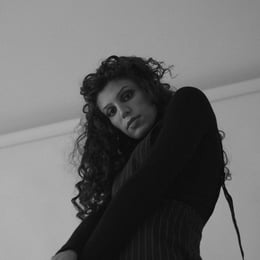The most authoritative answer in 2024
-
Oblique drawing, also known as cavalier projection or cabinet projection, is a method used in technical drawing to represent three-dimensional objects in a two-dimensional format. It is a form of pictorial drawing that provides a more realistic and easily understandable image of the object compared to other methods such as multiview orthographic projection. The use of oblique drawing is widespread across various fields, including architecture, engineering, design, and even in the creation of art. Here are some of the key uses and advantages of oblique drawing:
1. Visual Clarity: Oblique drawings are easier for the human eye to interpret because they mimic the way we naturally perceive objects in three-dimensional space. This makes them particularly useful for presentations or when explaining complex structures to a non-technical audience.
2. Aesthetic Appeal: The perspective in oblique drawings can enhance the visual appeal of the object being represented. It allows for a more artistic representation, which can be beneficial in fields where the visual presentation of a product is as important as its functionality.
3. Quicker Drafting: Compared to other projection methods, oblique drawing can be quicker to draft because it requires fewer lines to define the object. This can save time, especially during the conceptual stages of design.
4. Space Perception: Oblique drawings provide a better sense of depth and space, which is crucial for understanding the spatial relationships within a design. This is particularly important in architecture and interior design, where the layout and flow of space are key considerations.
5. Educational Tool: In educational settings, oblique drawings serve as an effective tool for teaching students about three-dimensional geometry and the principles of perspective.
6. Design Verification: Engineers and designers use oblique drawings to quickly verify the form and fit of components within a design. It allows them to spot potential issues with clearances and interferences more readily than with other types of drawings.
7.
Communication: Oblique drawings are an effective means of communication between team members and stakeholders. They provide a common visual language that can bridge the gap between different disciplines and facilitate a shared understanding of the project.
8.
Historical Preservation: In the field of archaeology and historical preservation, oblique drawings are used to document and reconstruct ancient structures. The drawings help in visualizing the original appearance of the structures and can be used for restoration purposes.
9.
Product Visualization: For marketing and sales purposes, oblique drawings can be used to create product visualizations that are more engaging and relatable to customers. They provide a more realistic preview of the product compared to line drawings or simple sketches.
10.
Creative Expression: Artists and designers often use oblique drawing as a form of creative expression. The technique allows them to explore different perspectives and create unique visual compositions.
It is important to note that while oblique drawing has its advantages, it is not without limitations. For instance, it does not provide the same level of precision and detail as multiview orthographic projections, which are essential for manufacturing and construction. Therefore, oblique drawings are often used in conjunction with other types of drawings to provide a comprehensive representation of an object.
Now, let's proceed with the translation into Chinese.
read more >>+149932024-05-26 10:20:11 -

-
Mia Thompson——Studied at Harvard University, Lives in Boston. Currently pursuing a career in medicine as a resident physician.
Oblique projection is a simple type of technical drawing of graphical projection used for producing two-dimensional images of three-dimensional objects.read more >>+119962023-06-14 03:20:52
About “Oblique、drawing、Oblique”,people ask:
- 23回复Why do we use first and third angle projection 2024?
- 78回复What is an example of an isokinetic exercise 2024?
- 85回复What is an axonometric projection 2024?
- 99回复What is a orthographic view 2024?
- 51回复What is a Trimetric view 2024?
- 29回复What is first angle of projection 2024?
- 68回复What is the first angle projection 2024?
- 81回复What is an example of an isotonic exercise 2024?
- 83回复What is a Trimetric projection 2024?
- 51回复Why do we use isometric drawings 2024?
- 91回复What is a isometric in geometry 2024?
- 100回复What is an isometric exercise 2024?
- 15回复Is running isometric or isotonic 2024?
- 88回复What is isometric and Allometric growth 2024?
- 79回复What is the advantage of an isometric exercise 2024?
READ MORE:
- +1576What is the definition of isometric lines 2024?
- +1149What are the angles of an isometric drawing 2024?
- +1803What is the first angle projection 2024?
- +1877Is yoga isometric 2024?
- +1425Are isometric exercises beneficial 2024?
- +1623What is an isometric drawing 2024?
- +1161What is a Trimetric view 2024?
- +1722What is a isometric in geometry 2024?
- +1732Is a plank an isometric exercise 2024?
- +1424What are some isometric exercises 2024?
- +1475What is the use of isometric scale 2024?
- +1670Why do we use isometric drawings 2024?
- +1711Are Push Ups isometric or isotonic 2024?
- +1277What kind of exercise is an example of an isometric exercise 2024?
- +1893What is the use of isometric 2024?
QuesHub is a place where questions meet answers, it is more authentic than Quora, but you still need to discern the answers provided by the respondents.







